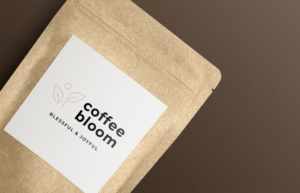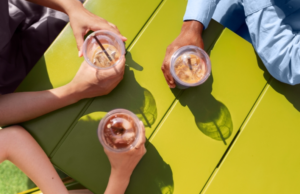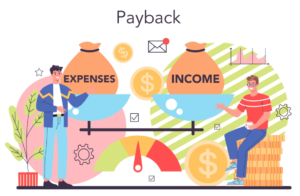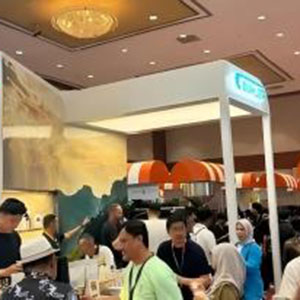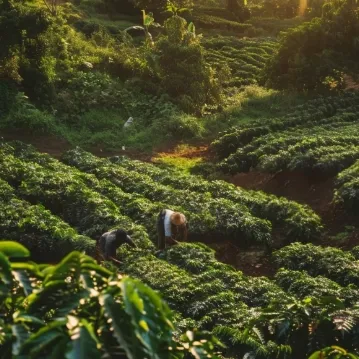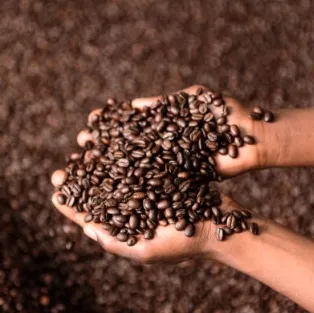From the online resources, we could see more and more people are talking about the importance of sustainable packaging and caring about the global environment. Most of us lived on the earth are using packaged consumption goods every day. Have you ever thought about how much wastes you generated in a day and how these wastes would impact the global climate? According to Mordor Intelligence, The Coffee Market size is estimated at USD 138.37 billion in 2025, and is expected to reach USD 174.25 billion by 2030, at a CAGR of 4.72% during the forecast period (2025-2030). They also pointed out that sustainability and ethical sourcing are the most concerned topics across the global coffee industry from the planting to terminal market.
Why Sustainable Coffee Packaging?
Market analysis has revealed a significant and growing demand for sustainable coffee packaging, driven by increasing consumer awareness of environmental issues over the world. A substantial portion of consumers, particularly younger demographics, actively seek out and prefer products with eco-friendly packaging, and are even willing to pay a premium for the sustainable, recyclable, compostable, or biodegradable consumption goods. This trend is also supported by open academic researches, which highlights that packaging design significantly influences consumer purchasing behavior, with sustainability being a key factor. While legal requirements for coffee packaging primarily focus on labeling (product identity, net weight, manufacturer information), there’s a growing emphasis on sustainability in regulations, particularly in regions like the EU. These regulations aim to reduce packaging waste and promote recycling of used goods.
Environmental concerns are another crucial factor. Traditional coffee packaging often involves materials like non-biodegradable plastics and aluminum laminates that contribute to landfill waste, pollution, and carbon emissions during production. We have concluded several compelling reasons for Necessity Of Sustainable Coffee Packaging, might help you with deciding whether upgrade your packaging formats:
Environmental Responsibility
- Reducing Waste: Compared with traditional coffee packaging raw materials, sustainable alternatives like recyclable,compostable options, paper-based, and biodegradable materials help minimize this waste.
- Lowering Carbon Footprint: The production ofone-time used packaging can be energy-intensive, contributing to greenhouse gas emissions. Sustainable packaging often utilizes renewable resources, requires less energy to produce, and can sometimes be part of a circular economy.
- Minimizing Pollution: Non-sustainable packaging can lead to environmental pollution, harming wildlife and ecosystems. Eco-friendly options aim to break down safely and return to the environment without leaving harmful residues.
Meet environment friendly consumers demand and preferences
- Growing Eco-Consciousness: Consumers are increasingly aware of environmental issues and actively seek out brands thatadopt sustainability. Studies show a significant percentage of consumers consider eco-friendly packaging when making purchasing decisions and are even willing to pay more for sustainable products.
- Brand Loyalty and Reputation: By adopting sustainable packaging, roasters can demonstrate their commitment to the planet, building trust and loyalty with environmentally conscious consumers. This can be a significant advantage compared with other coffee product brandsin current competitive market.
- Obtain a new group of consumers: Sustainable packaging enhances a brand’s image, portraying it as responsible and forward-thinking. This can attract new customers and strengthen relationships with existing ones.
Regulatory Compliance
- Most national Governmentsand State Administrations in a country are implementing stricter regulations on single-use plastics and packaging waste, such as the EU Packaging and Packaging Waste Regulation (PPWR). Proactive adoption of sustainable packaging can help roasters stay ahead of these regulations and avoid future compliance issues. Some brands even could open a new market.
Maintaining Product Quality
- Sustainable packaging doesn’t mean sacrificing the quality of the coffee. Innovations in materials science have led to eco-friendly options that still provide excellent barrier properties against moisture, oxygen, and light, ensuring the coffee remains fresh and flavorful. Features like resealable zippers and degassing valves are also available in sustainable formats.
Contributing to a Circular Economy:
- Sustainable packaging often focuses on recyclability and reusability, contributing to a circular economy where materials are kept in use for as long as possible, reducing the need for virgin resources.
What Sustainable Coffee Packaging?
Recyclable Coffee Packaging – should be collected, processed, and reused to create new products
| Recyclable Polyethylene (LDPE) | single-layer or dual-layer structures of LDPE, designed to be recycled in soft plastic recycling streams |
| Recyclable Polypropylene (PP) | also designed for recycling in specific plastic recycling streams |
| Recyclable Paper with Water-Based Barrier Coatings | kraft paper or other paper-based materials with thin, recyclable water-based coatings |
| Aluminum Cans with Recyclable Lids | aluminum is highly recyclable and offers excellent barrier properties |
Compostable Coffee Packaging – break down into nutrient-rich soil under specific composting conditions (industrial or home)
| Polylactic Acid Based Pouches and Liners | made from fermented plant starch, are industrial compostable |
| Cellulose-Based Films | derived from wood pulp, home and industrial compostable |
| Compostable Coffee Pods | made from materials like PLA, paper pulp, or other plant-based materials designed to break down in composting environments |
Biodegradable Coffee Package
break down into natural elements through the action of microorganisms. However, the time frame and conditions for biodegradation can vary greatly, and some biodegradable materials may not break down completely or may leave harmful residues. Compostable materials are a subset of biodegradable materials with specific standards for breakdown time and safety in a composting environment.
| Some Plant-Based Papers and Cardboards | uncoated and unlaminated paper and cardboard will naturally biodegrade over time. |
| Certain Bio-based Plastics | Some plastics derived from renewable resources may be biodegradable under specific conditions, but not necessarily compostable. |
| Compostable Coffee Pods | made from materials like PLA, paper pulp, or other plant-based materials designed to break down in composting environments |
Important Note on Biodegradable: The term “biodegradable” can be less specific than “compostable.” It’s essential to look for certifications that guarantee the material will break down safely and within a reasonable timeframe in a defined environment (industrial or home composting). Simply being “biodegradable” doesn’t always equate to an environmentally sound solution.When choosing sustainable coffee packaging, roasters should consider not only the material itself but also the local infrastructure for recycling or composting to ensure the packaging can be effectively processed at its end of life. Clear communication with consumers about proper disposal is also crucial.
Cost Analysis Sustainable Coffee Package&Traditional
Since the materials choosing and sourcing channels vary, we can not exactly calculate how much additional costs you spend after switching to sustainable coffee packaging. We have summarized following information for you:
Initial Material Costs
Traditional Packaging like conventional multi-layer laminates, usually aluminum and various plastics, have historically been cheaper due to established large-scale production, versatile sourcing channels, readily available raw materials, and shipping formats. Standard plastics like LDPE and PP are also cost-effective.
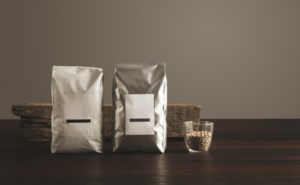
Sustainable Packaging like recyclable materials would be comparable in price to traditional plastics, especially as demand and production scale up. However, specialized barrier layers might relatively expensive. Recycable Plastic generally have a premium due to the sourcing, sorting, and reprocessing involved. However, this can be offset by potential tax benefits or grants in some regions and the positive brand image. Compostable Materials (PLA, cellulose-based films, etc.) tend to be more expensive than traditional plastics due to smaller production volumes, limited suppliers, specialized manufacturing processes, and the cost of raw materials. Recyclable Paper with Barrier Coatings vary depending on the type of paper and the complexity of the barrier coating. Besides, the high-performance recyclable barriers might cause additional costs.
Manufacturing and Conversion Costs
Traditional coffee packages have already built mature manufacturing processes for conventional films and laminates, translated to lower conversion costs
Sustainable coffee package generally need to adjust the existing machinery or invest in specialized equipment, potentially leading to higher initial investment or per-unit conversion costs. However, advancements in manufacturing are gradually reducing these differences.
Transportation and Storage Costs
Traditional coffee packaging uses lightweight plastic films which can be efficient to transport and store.However, sustainable coffee packaging,like paper-based packaging, might be bulkier or heavier, potentially increasing shipping and storage costs. Besides, those compostable materials require relatively thoughtful space to store. However, flexible packaging, whether made from traditional or sustainable coffee package materials, generally offer better space efficiency than rigid containers.
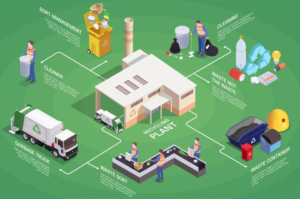
Waste Disposal Costs
In regions with landfill taxes or fees for non-recyclable waste, disposal costs for traditional coffee packaging can be significant and are likely to increase. Recyclable and compostable packaging can potentially reduce or eliminate these disposal costs, especially in areas with well-established recycling or composting infrastructure. Some regions might even offer incentives for using compostable packaging to divert waste from landfills.
Brand Image and Customer Perception
The cheaper traditional packaging may not resonate with environmentally conscious consumers, potentially leading to lost sales or a negative brand image in the long run.Sustainable Coffee Packaging Can be a significant marketing advantage, attracting eco-conscious customers who are often willing to pay a premium. This can lead to increased brand loyalty, positive public relations, and potentially higher long-term profitability, offsetting any initial cost premiums. As we previously mentioned, public studies indicate a growing percentage of consumers are willing to pay more for sustainable products.
Long-TermDevelopment Considerations
Increasing regulations on single-use plastics and packaging waste are likely to make traditional packaging more expensive in the future due to taxes, fees, or the need for redesigns to meet recyclability requirements. Investing in sustainable packaging now can future-proof your business.
While some sustainable coffee packaging options might require relatively higher up-front investment compared to traditional packaging, potential savings in waste disposal, enhanced brand image, increased customer loyalty, and mitigation of future regulatory costs would provide you with ideal returns.
How Balance Cost & Sustainability in Coffee Packaging
Define Your Sustainability Coffee Packaging
Determine what aspects of sustainability are most important to your brand and customer base. Is it recyclability, compostability, reducing plastic use, or sourcing renewable materials
Explore Different Sustainable Coffee Packaging Material Options
- Find Suppliers over the world for better price: Investigate worldwide suppliers of sustainable packaging, particularly have large volume in stocks. This can reduce costs of opening new molds and potentially offer more competitive price. Look for companies specializing in recyclable coffee package materials and products would be cost-effective.
- Compare Costs and Performance:Obtain quotes for various sustainable options and compare them not only to your current traditional packaging but also against each other. Evaluate their barrier properties, durability, and printing capabilities. Sometimes, a slightly more expensive sustainable option might offer better protection, reducing potential product waste.
- Consider Hybrid Solutions: You might not need to go fully “green” across all packaging formats immediately. Consider a hybrid approach where you use a more sustainable option for your primary retail bags (where customer visibility is high) and explore more cost-effective, yet still improved, options for wholesale or sample packaging.
Optimize Sustainable Coffee Packaging Design and Size
- Reduce Material Usage:Design your packaging to use the minimum amount of material necessary while still protecting the coffee. This can lower both material costs and environmental impact. Consider thinner but still effective films or right-sizing your bags.
- Standardize Packaging:Using a consistent set of packaging sizes can lead to economies of scale in purchasing and production, potentially offsetting some of the higher costs of sustainable materials.
- Simplify Structures:Opt for mono-material structures whenever possible, as they are generally easier and more cost-effective to recycle than complex laminates.
Leverage the Value Proposition of Sustainability in Coffee Packaging
- Communicate Your Efforts to Customers:Clearly highlight your sustainable packaging choices to your customers. This can be a strong selling point, attracting environmentally conscious consumers and potentially justifying a slight price premium. Use clear labeling and storytelling about your commitment.
- Explore Marketing Opportunities:Highlight your sustainability initiatives in your marketing materials, website, and social media. This can enhance your brand image and attract new customers.

Seek Partnerships and Collaboration
- Collaborate with Other Businesses: Partner with other local businesses or industry groups to explore bulk purchasing of sustainable packaging materials, potentially lowering costs.
- Engage with Waste Management Providers:Understand the local recycling and composting infrastructure in Neihu District and choose packaging materials that are effectively processed there. Communicate with waste management providers to explore potential collaborations or insights.
Build A Recycling Program For Coffee Capsule Consumers
- You could choose recyclable materials like Aluminum or industrial compostable materials while establish a recycling program and coupon/discount to encourage consumers bring used coffee package back to your store. This approach could retain customer loyalty and recycle used package in a specific time.
Case Learning
Are your still confusing on how to start your sustainable coffee package design and implement the plan. Let learn some successful real business world cases to brainstorming:
- Peet’s Coffee
Peet’s states a commitment to 100% recyclable and biodegradable packaging to reduce waste. They are using compostable coffee bags made from plant-based materials and encouraging sustainable habits by offering reusable and refillable options.
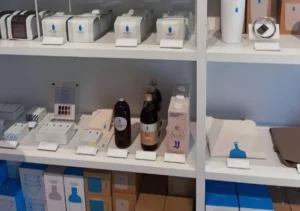
- Blue Bottle Coffee
It has a strong focus on zero-waste operations and aims to divert 90% of waste from landfills in their cafes. They have transitioned to using 100% compostable cups, lids, and utensils certified by the Biodegradable Products Institute. Blue Bottle also uses recyclable glass bottles and aluminum cans for their ready-to-drink (RTD) coffee products. They aim for 100% of their packaging to be compostable, recyclable, or reusable by 2025.
- Starbucks:
They have introduced cold cups with 10-20% less plastic and are transitioning to compostable or paper straws and recyclable lid stickers.
- Mondi & Paulig
They have a partnership revolutionized coffee packaging by creating one of the world’s first mono-material structures suitable for vacuum-packed coffee. Traditional vacuum packs use multi-layer laminates (including polyamide and aluminum) that are difficult to recycle. Mondi and Paulig developed a recyclable mono-material solution that still provides the necessary barriers, tightness, and functionality without aluminum. This reduces carbon emissions during transport as the packaging is shipped flat
- Dollop Coffee (USA)
Working with Grounded Packaging, Dollop Coffee adopted fully home compostable coffee pouches with zippers and valves made from Plantmade™ materials, aiming to lead the drive for sustainable packaging in Chicago

